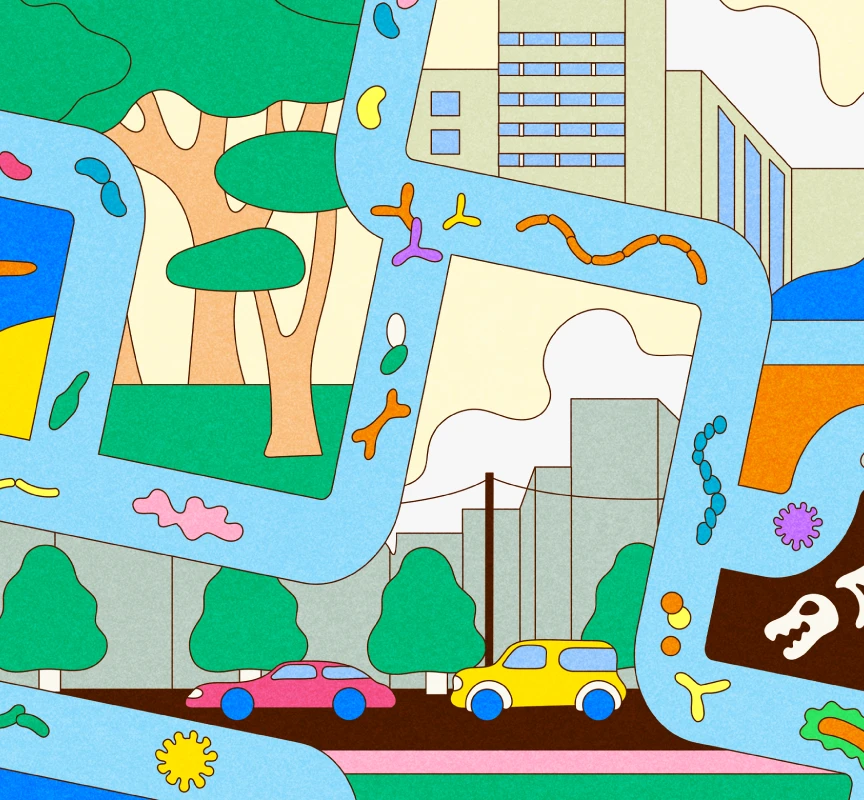Feature
Harnessing Methane Fermentation Power: Meet the Biogas Rangers Saving Our Planet!

Methane fermentation is a technology that breaks down organic waste into biogas, which consists of methane and carbon dioxide, along with liquid byproducts. Despite its benefits, many people find it hard to visualize how this process works. We want more people to appreciate the appeal of this technology. In this article, we’ve likened methane fermentation to power rangers, a concept many people can relate to, to make it more fun and accessible.
The Japan Pavilion at Expo 2025 Osaka showcases a methane fermentation system by Hitachi Zosen Corporation. This system embodies the concept of “JUNKAN,” or circulation, by breaking down and reusing food scraps collected from the venue. How will methane fermentation shine at the Japan Pavilion? We’ll introduce the system and the mechanisms that will be featured at the pavilion.
─
We all want to live in an earth-friendly way, but as we go about our lives, we produce waste. When we eat, we generate food waste. Today, in a corner of Japan, there’s a boy who’s worried about the food waste he’s created.

Boy
Ugh, I studied hard for the test, but I overslept and got a zero. My mom is mad at me, and the girl I like laughed at me. I ate and drank out of frustration, and now all that’s left is a pile of food waste.
All I do is add to the garbage. I feel like a burden on the planet. What can I do...?

Trio
It’s okay! We’re here to help!

Boy
Wh-Who are you?!

Hydrolysis
I’m the Hydrolysis Process!

Acetogenesis
I’m the Acetogenesis Process!

Methane
And I’m the Methanogenic Process!

Trio
Together, we are the Biogas Rangers, the Methane Fermentation Squad! We use the power of microorganisms to transform organic waste back into valuable resources, keeping the ecological cycle going!

Biogas Rangers, Methane Fermentation Squad
The heroes of methane fermentation, consisting of the Hydrolysis Process, Acetogenesis Process, and Methanogenic Process. They convert organic matter into methane gas through the power of aerobic microorganisms and methanogens.

Boy
A boy who is feeling down because he hasn’t had any good days lately. He lives by producing food waste every day.

Methane
That biomass you have...

Boy
You mean this food waste?

Methane
Yes, it’s wrong to treat it as mere “food waste.” It is organic matter that was once part of living organisms. It’s a resource waiting to be transformed. Our mission is to return what you call “food waste” back to nature with the help of microorganisms. Watch us in action!


Boy
Aerobic microorganisms?

Hydrolysis
Food waste contains carbohydrates, proteins, and other nutrients for microorganisms. These are dissolved into a slurry by the power of microorganisms. Let’s go! Ha!

Boy
Wow, the food waste is turning into mush right before my eyes! I had no idea microorganisms could do this!

Hydrolysis
Imagine opening a refrigerator in an abandoned building and finding everything inside liquefied.

Boy
You think I’ve ever seen anything like that?

Hydrolysis
What was that?

Boy
No, nothing. The waste is now a slurry. What happens next?


Acetogenesis
Now it’s my turn! The Acetogenesis Process!

Boy
Acetogenesis, like vinegar?

Acetogenesis
Exactly! Vinegar is mainly acetic acid. We’re going to produce acetic acid and hydrogen from biomass slurry, or low-molecular-weight organic matter. Let’s go, aerobic microorganisms!

Boy
Aerobic microorganisms again?

Acetogenesis
Not a fan?

Boy
I mean...I just thought your character was similar to the other guy.

Acetogenesis
It’s just your preconceived notions making you think that two heroes can’t have similar personalities. Let’s start! Aerobic microorganisms, lend me your strength! Time for acetogenesis!

Boy
Oh, that sour smell. Is this also from microorganisms?

Acetogenesis
Yes, like the sour smell from leaving food waste in a trash can.

Boy
What happens to this vinegar-like substance?


Methane
Now, it’s my turn! I am the Methanogenic Process, here to produce methane gas and carbon dioxide from acetic acid and hydrogen.

Boy
But doesn’t methane gas contribute to global warming through the greenhouse effect...?

Methane
You’re well informed! However, that’s if methane is released into the atmosphere. We capture methane from food waste and use it to generate electricity. From one ton of food waste, we can produce about 100,000 1.5-liter plastic bottles worth of methane gas, where 60% is methane and the rest is carbon dioxide.

Boy
But burning it produces carbon dioxide, right?

Methane
The carbon dioxide released comes from plants and animals that were once part of the Earth’s carbon cycle, so the overall amount on Earth doesn’t increase. This is what we call carbon neutrality.

Boy
I’ve heard of carbon neutrality somewhere before!!

Methane
And that’s not all. We turn food waste into gas, burn it, and the carbon dioxide released is absorbed by plants and turned into oxygen. Even when those plants eventually wither, they become resources for other energy processes. Resources continuously cycle, returning to the beginning. This is the concept of “JUNKAN.”

Boy
JUNKAN... It means nothing goes to waste!

Methane
Exactly! Now, let’s summon the methanogens. Come forth, methanogens! Show us the power of archaea that have thrived on Earth for 3.5 billion years!

Boy
Methane gas; it’s like a fart, but without the bad smell!
Methanogens are ancient bacteria that existed on Earth long before oxygen was abundant. They thrive in anaerobic conditions, like fermentation in enclosed spaces.

Boy
So this is the power of methane!

Methane
Think of it like the bubbles you see rising from a decaying fish at the bottom of a pond—that’s methane gas.

Boy
Could you come up with less...graphic analogies?

Methane
The remaining liquid is purified by microorganisms and filtered to produce water. It’s a complete circular cycle!


Boy
Thanks for cleaning up all that food waste!

Methane
If you’re thankful, give credit to the methanogens and microorganisms. Methanogens are distant relatives, sharing a common ancestor with us billions of years ago. That ancestor branched into archaea, like methanogens, bacteria including cyanobacteria, and eventually eukaryotes, which include plants, animals, and us.

Boy
Now I don’t have to burden the Earth anymore. I just need to focus on getting a good score on my next test.

Methane
Take your methanogens to school! With their 3.5 billion years of experience, you will be popular in school

Boy
Um, maybe not.
▼Biogas Plant at Japan Pavilion, Expo 2025 Osaka
The Japan Pavilion at Expo 2025 Osaka will showcase a biogas plant developed by Hitachi Zosen Corporation. This cutting-edge facility will refine and utilize biogas derived from biomass (such as food waste and organic matter) through methane fermentation, establishing a sustainable “JUNKAN,” or cycle, within the pavilion.
Illustration: Akiko Tokunaga
Special Thanks to: Hitachi Zosen Corporation
Let’s Share!
A troubled boy is visited by the Biogas Rangers! What are their amazing powers...?
Share your Monthly JP pavilion and circulate your thoughts.
Related Articles

01/03
“Microorganisms Are With Us at This Very Moment.” We Asked Kohei Ito From Biota About the Symbiotic Relationship Between Humans and Invisible Things
Invisible to the eye, yet undeniably present everywhere. Kohei Ito emphasizes the necessity of microbial diversity in urban areas.
Read more
02/03
Did Microorganisms Come from Space?
Thinking about the Cosmic Scale of CyclesCan microorganisms survive in extreme environments? Let's explore the various theories related to the origin of life.
Read more